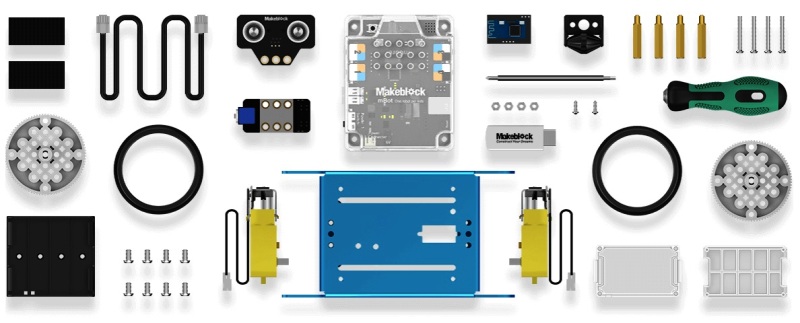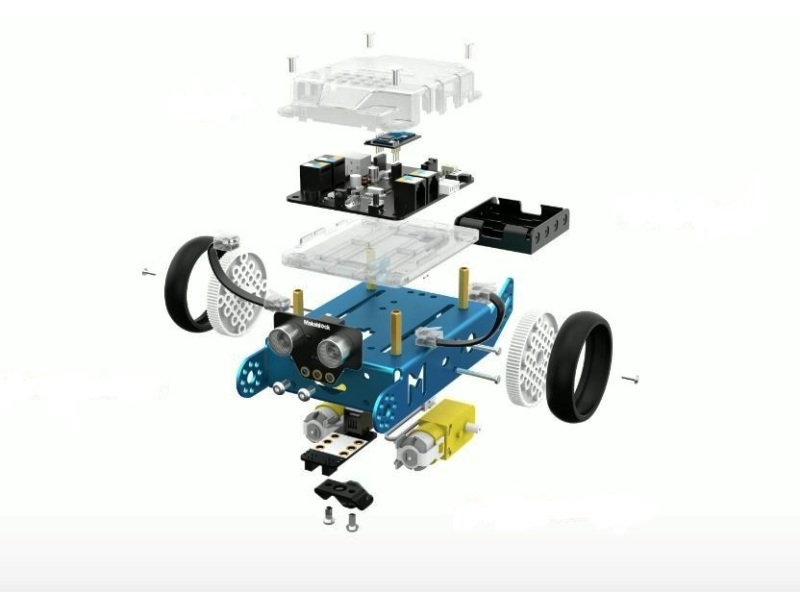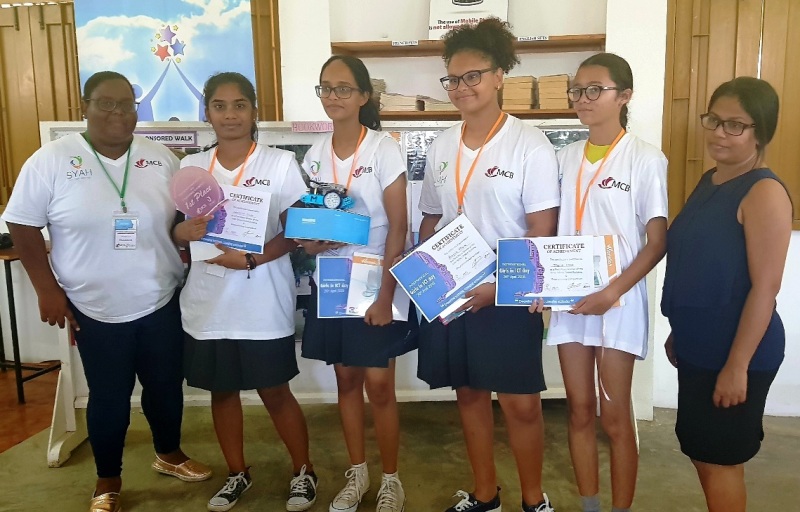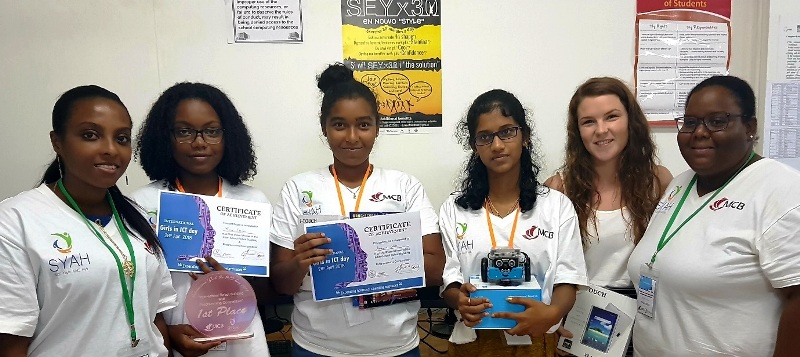Robot building and programming using Makeblock’s mBot & mBlock |11 May 2018
To commemorate International Girls in Information and Communication Technology (ICT) Day, an initiative of the International Telecommunications Union (ITU), a ‘Robot Building and Programming’ competition for young school girls was held from April 26-28, 2018 on Mahé and Praslin by SYAH-Seychelles in collaboration with MCB Seychelles.
Beryl Payet, an engineer by profession and the facilitator of the three-day event, shares details of the robotic kit which was provided to the students to help them build and program their robots.
The Robot
The robot used for the competition was the ‘mBot’ - a robot from Makeblock Co. Ltd. It is an educational, programmable, electronic robot kit for beginners to learn Science, Technologies, Engineering and Mathematics (STEM), and Do It Yourself (DIY) Robot.
It is also considered as an all-in-one solution for kids to enjoy the hands-on experience of graphical programming, electronics and robotics.

The mBots used by the students during the competition
The robot can be simply assembled through 40 specially designed parts with step-by-step instructions which are provided.

Parts of the mBot to be assembled

The students using instructions to assemble the mBot parts
The mBot comes equipped with four connection interfaces and seven electronic modules and, together with add-on packs and their own code, it allows children to turn their robot into a dancing cat, a smart lamp, and other creative projects.
Children can also achieve different fun projects like wall avoidance, line following and
games with other mBots through the different sensors. mBot is also compatible with LEGO® blocks for even extensibility. For the competition, the mBots were equipped with 2 sensors; the line-follower sensor and the ultrasonic sensor.
 mBot Add-on Packs
mBot Add-on Packs
For the first part of the competition, each team was presented with their kit and were given a maximum of 1 hour to assemble the robot; the robot can be easily assembled in 10 minutes. The time for each team took to complete the assembling of the robot was recorded and the teams were then ranked and awarded points, with the team completing in less time awarded the highest mark.
Over the three days of competition, International School Seychelles had the best time for building the robot which was 15 minutes. All schools managed to complete the building of the robot within the allocated 1hour.

Assembling the Robot
Programming the robot
Coding has become a new modern-day language to express ideas and inspiring children’s originality, while helping to develop logical thinking. mBlock, the software used for the programming of mBot is a programming software made up of colourful and modularised drag and drop graphical blocks. Children get to feel accomplished when they are able to easily program the mBot without writing difficult codes and language.
mBlock is inspired by Scratch 2.0 that makes it easy to programme the robot and undertake creative interactions. The programming is also easy to master as building blocks. Dragging the blocks to the editing area, you can create funny games, stories and animations easily. The program interacts with the main control board of the mBot, allowing users to easily create interactive intelligent applications.

The mBlock Interface
For the second part of the competition, the students had to program the mBot to undertake two tasks; the first was to follow a straight line and the second was to follow an infinity loop. Then, the teams who completed both tasks had to use the software and both sensors of the mBot to demonstrate their understanding of the software, as well as their creativity. Throughout the competition, only one team did not manage to complete the first task.
During the three days of competition, Independent School Seychelles had the best time recorded for the first task which they completed in 12 minutes. However, although Vijay International School took 43 minutes to undertake the first task, their program was well detailed so that no further programming was required for them to undertake the second task. This meant that their program worked for both tasks.
Vijay International School also impressed the facilitator with another program whereby their robot had a melody once switched on. The robot then used the line sensor to follow any black line and also using ultrasonic sensor, the robot would come to a stop once it met an obstruction.
The winners for the three days of competition are as follows:
Day 1 - held at Mont Fleuri Secondary School
Day 1: First place – Independent School Seychelles

- 1st Prize - Independent School Seychelles
- 2nd Prize - Mont Fleuri Secondary School
- 3rdPrize - Pointe Larue Secondary School
Day 2 - held at Beau-Vallon Secondary School
Day 2: First place – International School Seychelles

- 1st Prize - International School Seychelles
- 2nd Prize - Belonie Secondary School
- 3rd Prize – Beau-Vallon Secondary School
Day 3 - held at Praslin Secondary School
Day 3: First place – Vijay International School

- 1st Prize - Vijay International School
- 2nd Prize - Praslin Secondary School
- 3rd Prize - La Digue Secondary School
All teams won books and shields, and the members of the winning teams won one tablet each.
According to Ms Payet, it was an amazing three days of competition and the students enjoyed exploring robotics and basic programming. She takes the opportunity to thank the main sponsor, MCB Seychelles, for making this project a reality and to also extend sincere thanks to Chanterelle Bookshop, the schools and organizations that have shown their support towards the project.
Image sources: Makeblock
Photo sources: Beryl Payet




